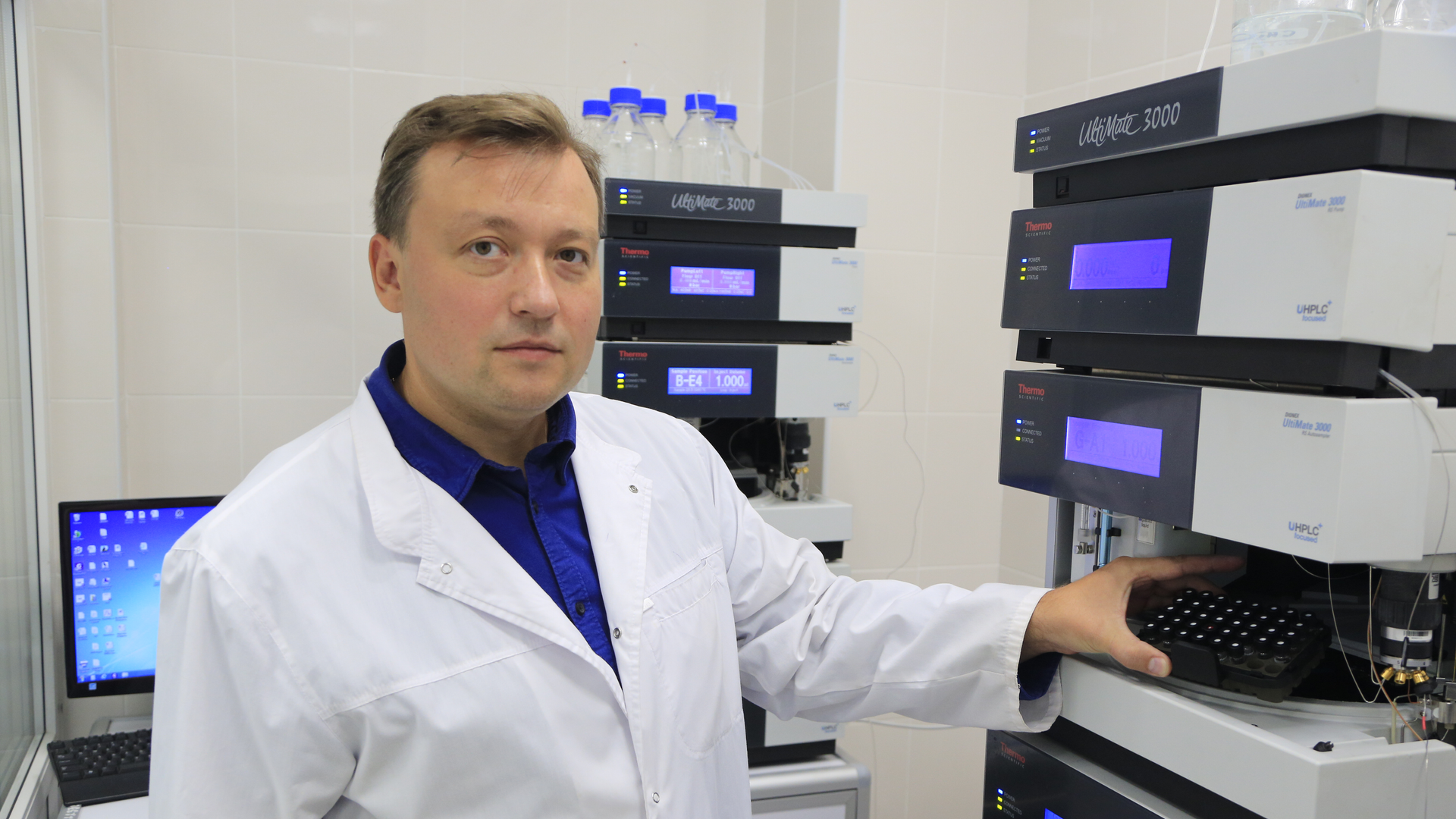https://sputnikglobe.com/20240611/russian-scientists-identify-genes-predisposing-to-peptic-ulcer-disease-1118860964.html
Russian Scientists Identify Genes Predisposing to Peptic Ulcer Disease
Russian Scientists Identify Genes Predisposing to Peptic Ulcer Disease
Sputnik International
Geneticists from Russia's Belgorod State National Research University have proposed using DNA analysis to identify hereditary predisposition to peptic ulcer disease of the stomach and duodenum.
2024-06-11T10:09+0000
2024-06-11T10:09+0000
2024-06-11T10:09+0000
beyond politics
russia
medicine
disease
dna
https://cdn1.img.sputnikglobe.com/img/07e7/09/12/1113467296_0:0:3072:1728_1920x0_80_0_0_dfd711e22179852fae82d3480db3777a.png
According to the researchers, their method of analyzing DNA fragments allows for the high-accuracy identification of at-risk groups among healthy individuals and can help prevent the development of the disease. This was reported by the university's press service.Scientists from Belgorod State University (NRU BelSU) explained that peptic ulcer disease of the stomach and duodenum is often associated with the bacterium Helicobacter pylori. Once in the gastrointestinal tract, Helicobacter causes inflammation of the mucous membrane, which can lead to ulcer development. The disease occurs in 5-10% of the adult population worldwide.The symptoms cause significant discomfort to patients: reduced appetite, heartburn, and painful sensations. Potential complications, which affect 10-20% of patients, can be life-threatening.One such complication is perforation, a deep tissue damage that leads to a full-thickness perforation, causing stomach or intestinal contents to leak into the abdominal cavity. Bleeding occurs six times more frequently than perforations, and bleeding is the cause of death in 40% of cases. Additionally, chronic ulcers can lead to the development of malignant tumors.Serious complications of peptic ulcer disease can only be treated surgically. Recovery from such operations depends on many factors but generally takes at least three months. The peak incidence is among people of working age—30 to 45 years. This underscores the importance of expanding methods for early risk prediction of peptic ulcer disease.According to Mikhail Churnosov, head of the Department of Biomedical Sciences at the NRU BelSU Medical Institute, the disease typically develops from a combination of three factors: bacterial infection, unhealthy lifestyle, and hereditary predisposition. The hereditary contribution to the disease ranges from 5.5% to 50%, making it crucial to consider individual genetic characteristics for determining the probability of disease development and effectively identifying risk groups among healthy individuals.The Belgorod State University research team proposed methods for identifying hereditary predisposition to peptic ulcer disease development based on molecular genetic analysis of several DNA regions.The professor stated that current approaches to predicting the risk of peptic ulcer disease development generally do not consider patients' genetic characteristics, hindering improvements in prediction quality.The first proposed prediction method from the Belgorod geneticists is based on identifying various alleles (forms of the same gene) located at polymorphic loci (identical DNA regions), which can determine the likelihood of disease development in both males and females.According to Churnosov, the combination of genotypes at loci rs2294008 PSCA CC and rs6136 SELP AA indicates a high probability that a patient will develop peptic ulcer disease in the future.The second DNA analysis method involves determining genotypes at polymorphic loci rs2294008 PSCA CC and rs2519093 ABO CC. Like the first method, it also enables high-probability identification of disease risk in both men and women.Analysis of polymorphic regions rs2294008 PSCA and rs649129 ABO/RF00019 can identify hereditary predisposition to peptic ulcer disease of the stomach and duodenum only in women.The university, which implements the "Scientific Belgorod" project with the support of the Ministry of Education and Science of the Russian Federation, reported that over 700 patients from the gastroenterology department of the Belgorod Regional Clinical Hospital of St. Ioasaf participated in the study.
https://sputnikglobe.com/20240523/russia-open-to-nuclear-tug-powered-space-mission-with-brics-partners---roscosmos-1118598103.html
https://sputnikglobe.com/20240508/russian-chinese-lunar-nuclear-power-plant-will-combine-countries-scientific-strong-suits-1118339576.html
https://sputnikglobe.com/20240428/russia-studies-mysterious-ghost-particle-that-affects-whole-universe-1118163914.html
russia
Sputnik International
feedback@sputniknews.com
+74956456601
MIA „Rossiya Segodnya“
2024
Sputnik International
feedback@sputniknews.com
+74956456601
MIA „Rossiya Segodnya“
News
en_EN
Sputnik International
feedback@sputniknews.com
+74956456601
MIA „Rossiya Segodnya“
Sputnik International
feedback@sputniknews.com
+74956456601
MIA „Rossiya Segodnya“
russian science, russian scientists, russian genetics, belgorod state national research university, dna ulcer russia, peptic ulcer russia
russian science, russian scientists, russian genetics, belgorod state national research university, dna ulcer russia, peptic ulcer russia
Russian Scientists Identify Genes Predisposing to Peptic Ulcer Disease
Geneticists from Russia's Belgorod State National Research University have proposed using DNA analysis to identify hereditary predisposition to peptic ulcer disease of the stomach and duodenum.
According to the researchers, their
method of analyzing DNA fragments allows for the high-accuracy identification of at-risk groups among healthy individuals and can help prevent the development of the disease. This was reported by the university's press service.
Scientists from Belgorod State University (NRU BelSU) explained that peptic ulcer disease of the stomach and duodenum is often associated with the bacterium Helicobacter pylori. Once in the gastrointestinal tract, Helicobacter causes inflammation of the mucous membrane, which can lead to ulcer development. The disease occurs in 5-10% of the adult population worldwide.
The symptoms cause significant discomfort to patients: reduced appetite, heartburn, and painful sensations. Potential complications, which affect 10-20% of patients, can be life-threatening.
One such complication is perforation, a deep tissue damage that leads to a full-thickness perforation, causing stomach or intestinal contents to leak into the abdominal cavity. Bleeding occurs six times more frequently than perforations, and bleeding is the cause of death in 40% of cases. Additionally, chronic ulcers can lead to the development of malignant tumors.
Serious complications of peptic ulcer disease can only be treated surgically. Recovery from such operations depends on many factors but generally takes at least three months. The peak incidence is among people of working age—30 to 45 years. This underscores the importance of expanding methods for early risk prediction of peptic ulcer disease.
According to Mikhail Churnosov, head of the Department of Biomedical Sciences at the NRU BelSU Medical Institute,
the disease typically develops from a combination of three factors: bacterial infection, unhealthy lifestyle, and hereditary predisposition. The hereditary contribution to the disease ranges from 5.5% to 50%, making it crucial to consider individual genetic characteristics for determining the probability of disease development and effectively identifying risk groups among healthy individuals.
The Belgorod State University research team proposed methods for identifying hereditary predisposition to peptic ulcer disease development based on molecular genetic analysis of several DNA regions.
"The proposed DNA analysis methods have no foreign analogues. In Russia, studies on genetic risk factors for peptic ulcer disease are also rare," Churnosov noted.
The professor stated that current approaches to predicting the risk of peptic ulcer disease development generally do not consider patients' genetic characteristics, hindering improvements in prediction quality.
The first proposed prediction method from the Belgorod geneticists is based on identifying various alleles (forms of the same gene) located at polymorphic loci (identical DNA regions), which can determine the likelihood of disease development in both males and females.
According to Churnosov,
the combination of genotypes at loci rs2294008 PSCA CC and rs6136 SELP AA indicates a high probability that a patient will develop peptic ulcer disease in the future.
The second DNA analysis method involves determining genotypes at polymorphic loci rs2294008 PSCA CC and rs2519093 ABO CC. Like the first method, it also enables high-probability identification of disease risk in both men and women.
Analysis of polymorphic regions rs2294008 PSCA and rs649129 ABO/RF00019 can identify hereditary predisposition to peptic ulcer disease of the stomach and duodenum only in women.
"Previously, data on interlocus interactions and combinations of the listed genotypes as a basis for predicting the likelihood of developing peptic ulcer disease of the stomach and duodenum were not considered," added Churnosov.
The university, which implements the "Scientific Belgorod" project with the support of the Ministry of Education and Science of the Russian Federation, reported that over 700 patients from the gastroenterology department of the Belgorod Regional Clinical Hospital of St. Ioasaf participated in the study.





